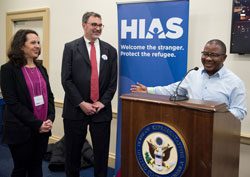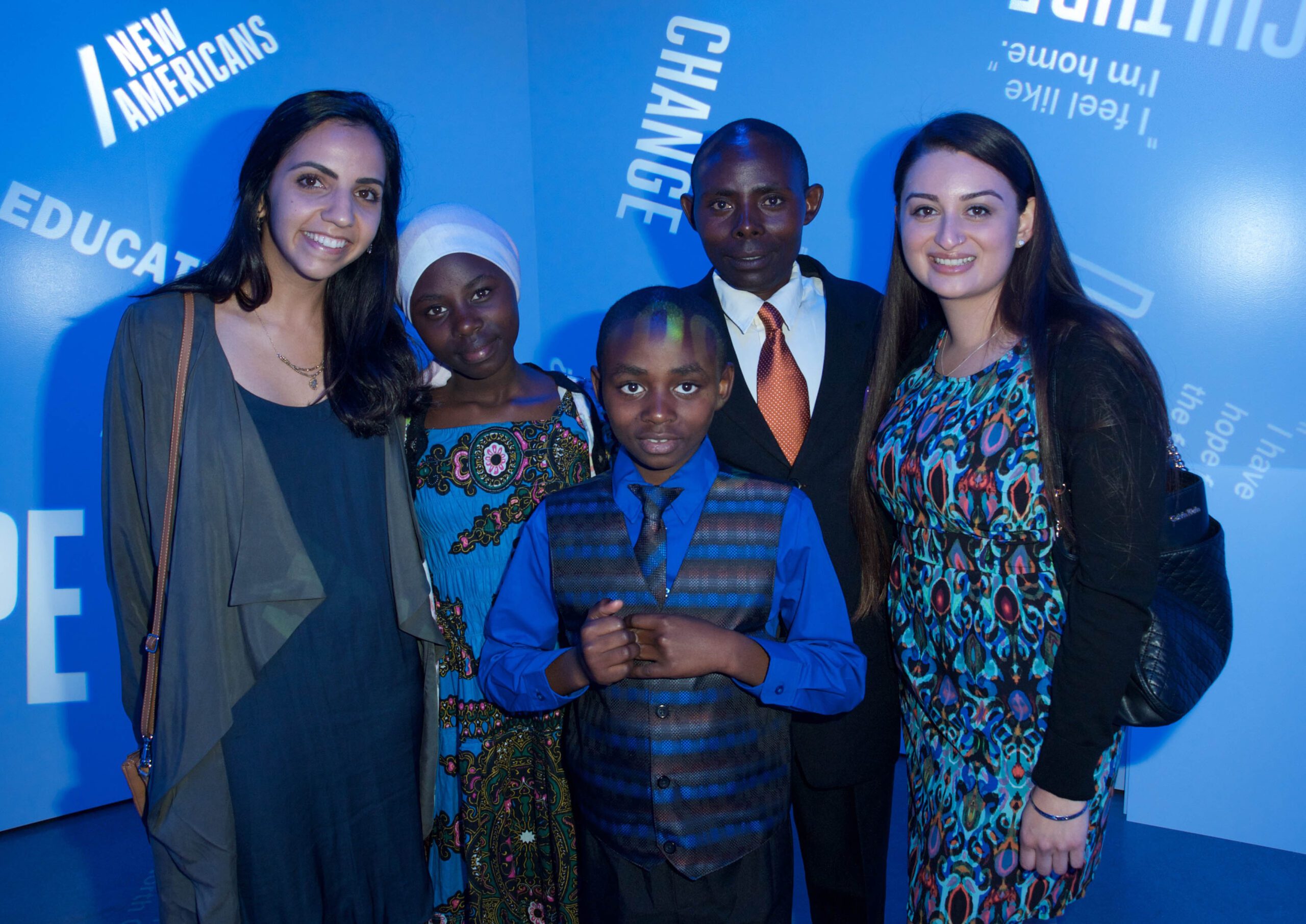Safehouses Offer Protection to Refugees in Dire Jeopardy
By Magnolia Turbidy, Director of Durable solutions
Mar 26, 2015

Safehouses provide at-risk refugees critical short-term security while they await resettlement.
(HIAS)
Last month, while visiting Nairobi, Kenya to train HIAS local staff on resettling vulnerable refugees, I met “Sylvia.” Sylvia was living in a HIAS safehouse, a facility on the outskirts of the city specifically designed for refugees with exceptionally serious protection concerns. For refugees like Sylvia, safehouses provide critical short-term security while they await resettlement—often their only option for long-term safety and freedom from persecution.
In fact, Sylvia’s personal situation was so precarious and traumatizing that she was only willing to share a few sparse details about her situation with me. She was in her thirties, had fled from the Democratic Republic of the Congo (DRC), and struggled every day to survive, living in constant fear of being found by her attackers or their proxies.
Bearing witness to Sylvia’s palpable anxiety, I couldn’t help but recall Tirhas, another refugee I had helped resettle from Khartoum, Sudan to Sweden three years ago. Tirhas was a young woman, also in her early 30s, who had fled Eritrea. At 18 she had been forced to join the military as part of her national duty. What was supposed to be two years service turned into almost a decade of forced labor. She lived on a base where she worked as a cleaner, earned very little money and was only able to leave once a year to visit her family. Whenever she tried to request additional leave or ask the military officers when her conscription would end, Tirhas was interrogated about conspiring against the Eritrean government and thrown into the military prison.
On what would be her last visit home, Tirhas decided to flee the country because she knew she could never be free in Eritrea. Tirhas paid a smuggler to get her out of the country and across the border into Sudan. At the border, he handed her to another smuggler who was supposed to take her to Khartoum, Sudan’s capital. But on the second leg of the journey, the smuggler confronted her and insisted that she owed him much more money than they’d initially agreed upon. Unable to pay her “debt”, Tirhas was taken to a private house where a strange man locked her in a small room with a bed, a light blanket, and two buckets in the corner for her to use as a toilet and for bathing.
Each day small amounts of food were handed to her through a crack in the door. Each night she was raped by her captor. Tirhas was completely alone, terrified, and in pain from the sexual violence.
After three months in captivity, the woman of the house came in one morning to bring Tirhas food and found her bleeding. The woman unlocked the door and let Tirhas run. She took off for a main road and hitched a ride with a truck driver heading to Khartoum. The truck driver brought her to the hospital where she was treated for several weeks. While Tirhas was recovering, a hospital clinician contacted my office, hoping we could get her help.
I worked closely with Tirhas, put her in protection housing in Khartoum and made sure she was safe from her captors while I facilitated her resettlement (a long and difficult process).
Stories like Tirhas’—and Sylvia’s—are all too common in the refugee world, and exemplify why safehouses are critical. Refugees do not necessarily leave danger behind when they arrive in the country of asylum. Some find themselves in trafficked situations like Tirhas; others are followed by perpetrators from the country of origin into the countries where they are seeking asylum. Some refugees flee across borders only to face the same persecution they sought to escape in their home countries; others face domestic violence in their households, an unfortunate side effect of the economic strains in refugee families.
The safehouses HIAS operates in Nairobi and elsewhere provide protection to some of the most vulnerable refugees while their case managers work to expedite resettlement and ultimately freedom, safety, a chance to recover from trauma and the opportunity to lead a life of dignity.
*Name has been changed for the refugee’s protection
[[{"fid":"958","view_mode":"default","fields":{"format":"default","field_file_image_alt_text[und][0][value]":"Magnolia Turbidy","field_file_image_title_text[und][0][value]":"Magnolia Turbidy"},"type":"media","attributes":{"alt":"Magnolia Turbidy","title":"Magnolia Turbidy","style":"margin-left: 10px; margin-right: 10px; float: left;","class":"media-element file-default"}}]]As Director of Durable solutions, Magnolia Turbidy provides technical support on resettlement to HIAS field office staff across the globe. She spearheads new resettlement programs and works directly with HIAS legal departments on refugee status determination and resettlement. Magnolia has worked on behalf of refugees around the world since 2006. Prior to joining HIAS in 2012, she worked at UNHCR and various other refugee assisting NGOs in Sub-Saharan Africa and Thailand.


